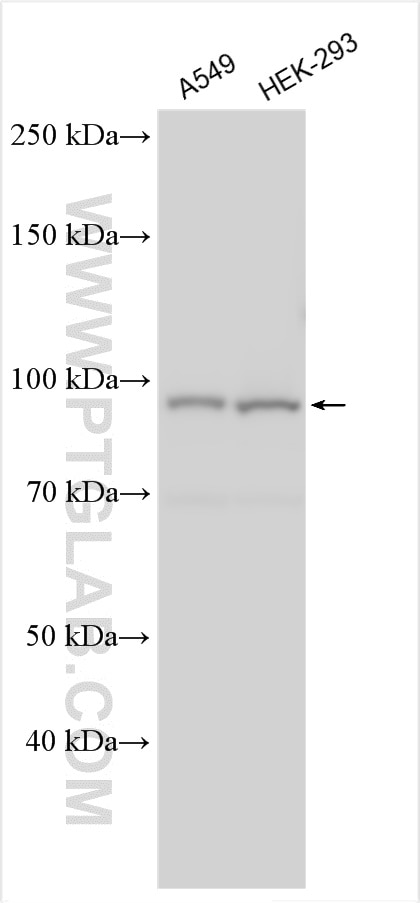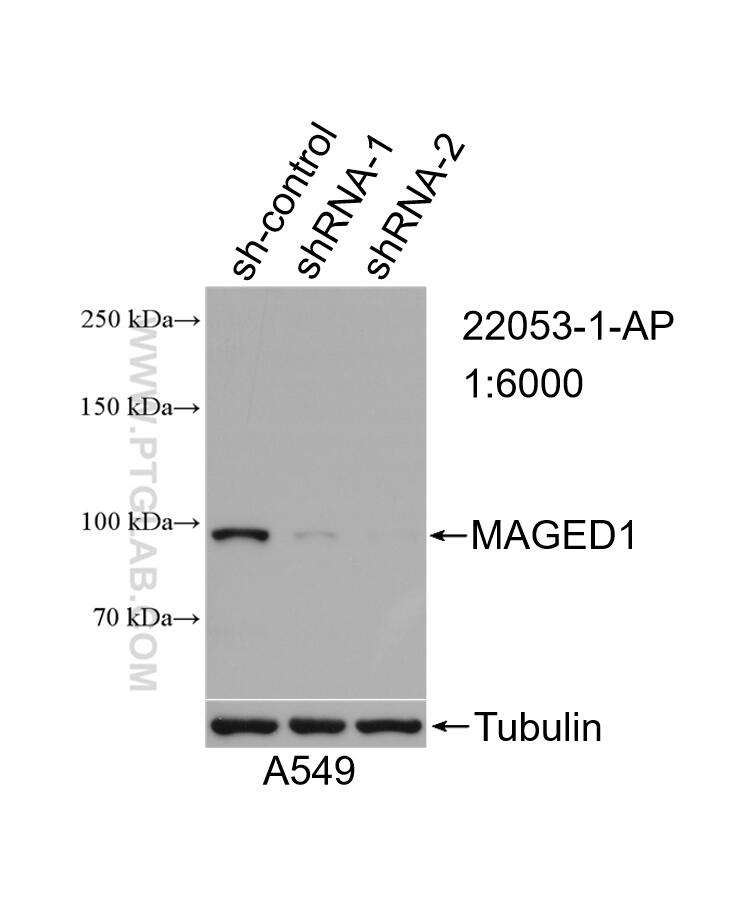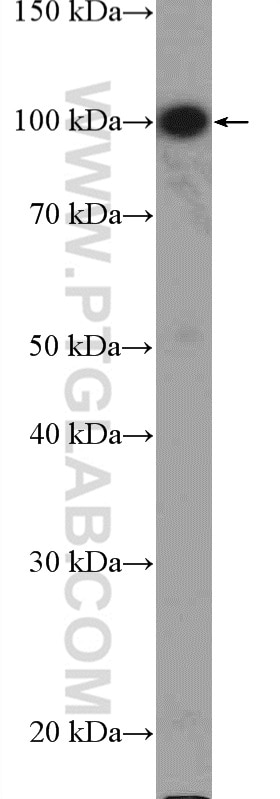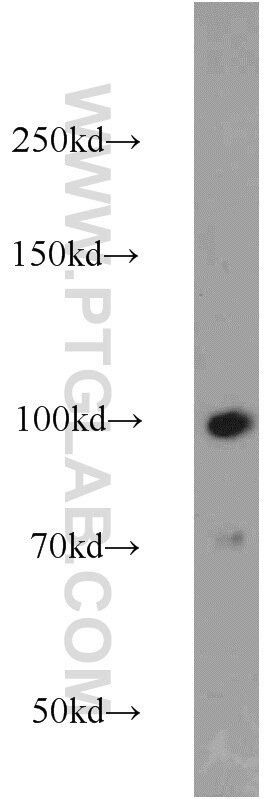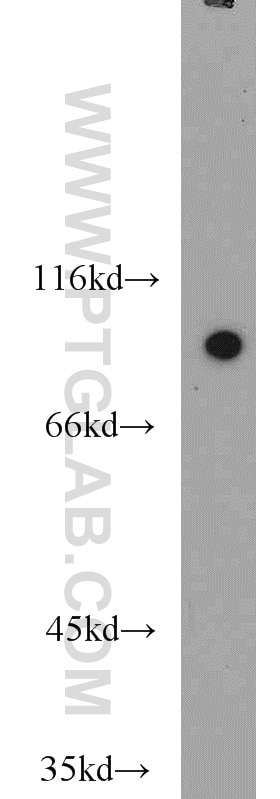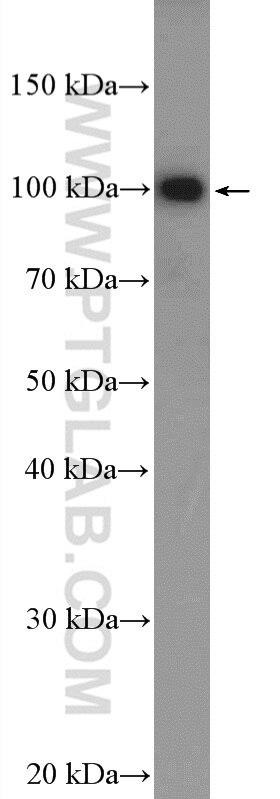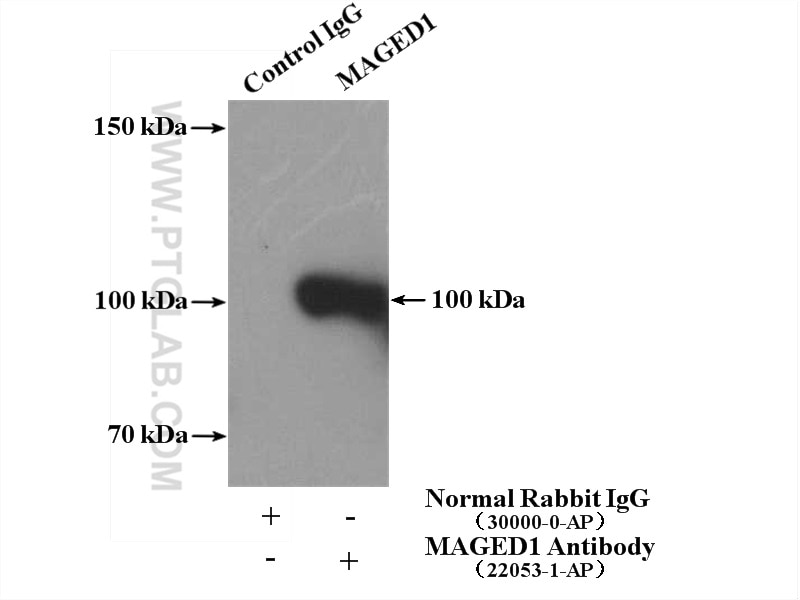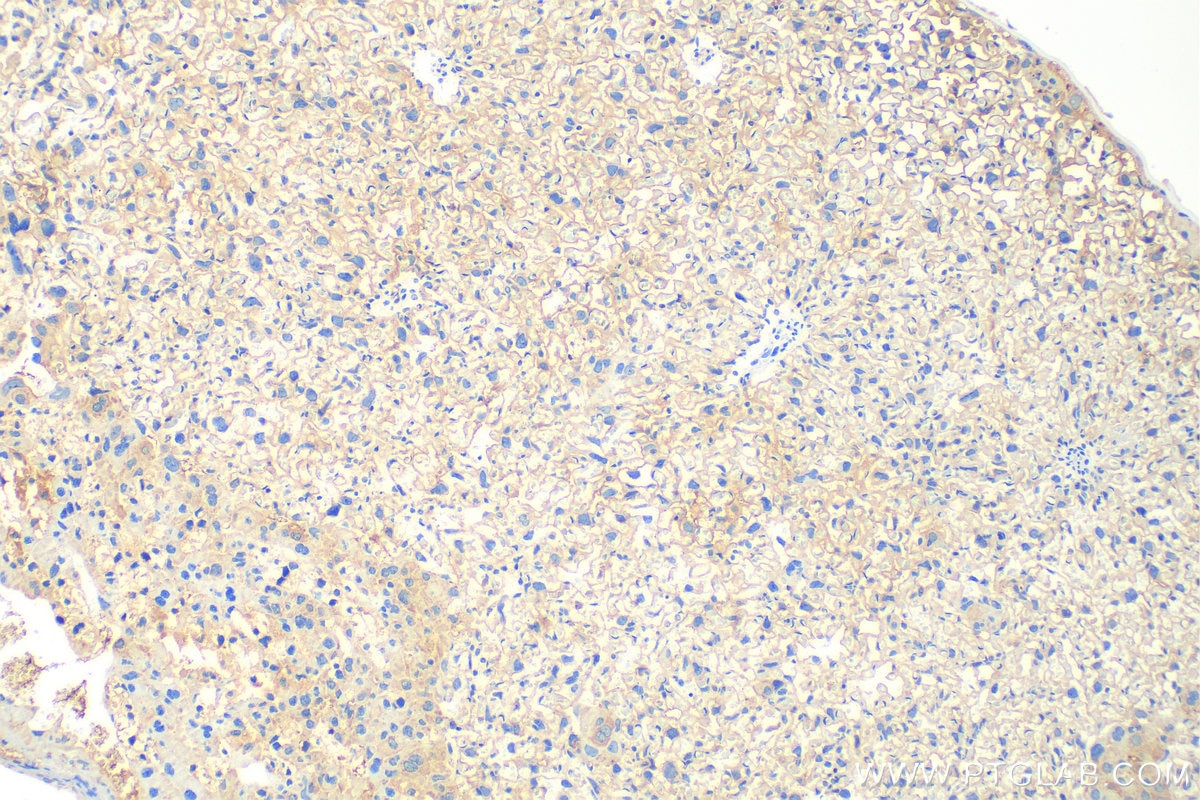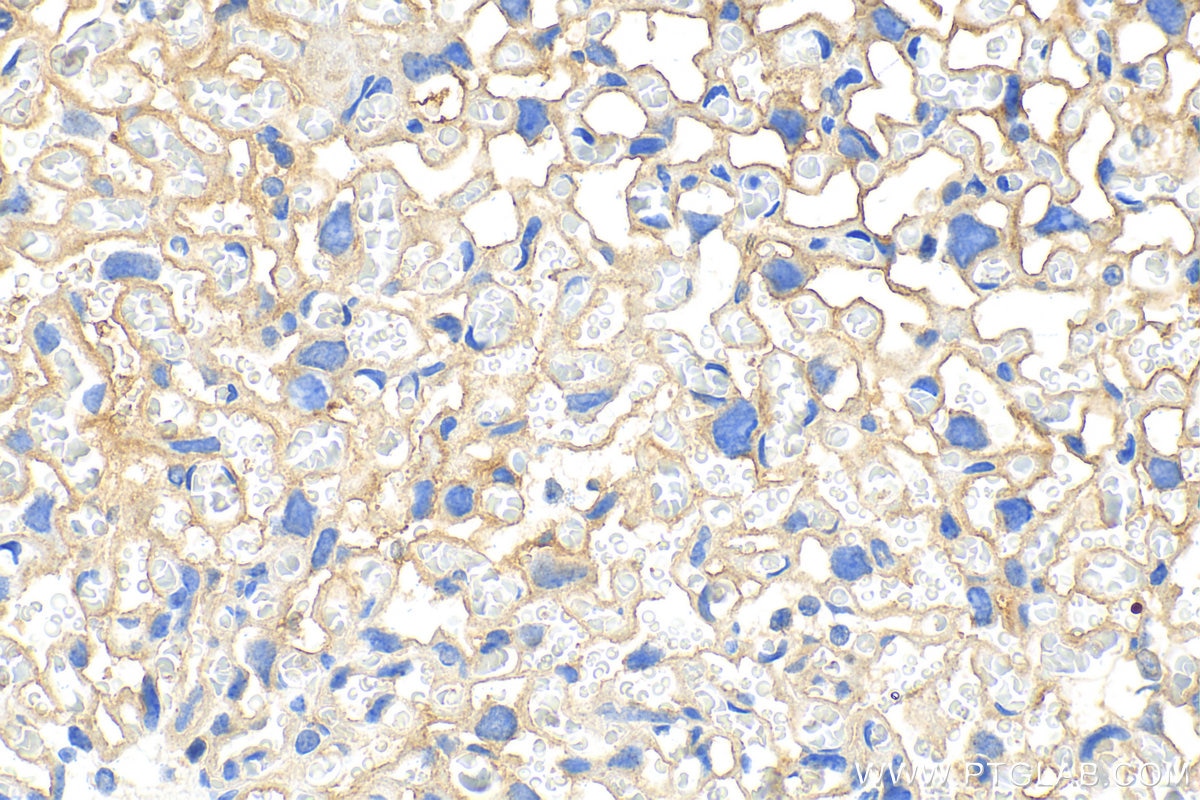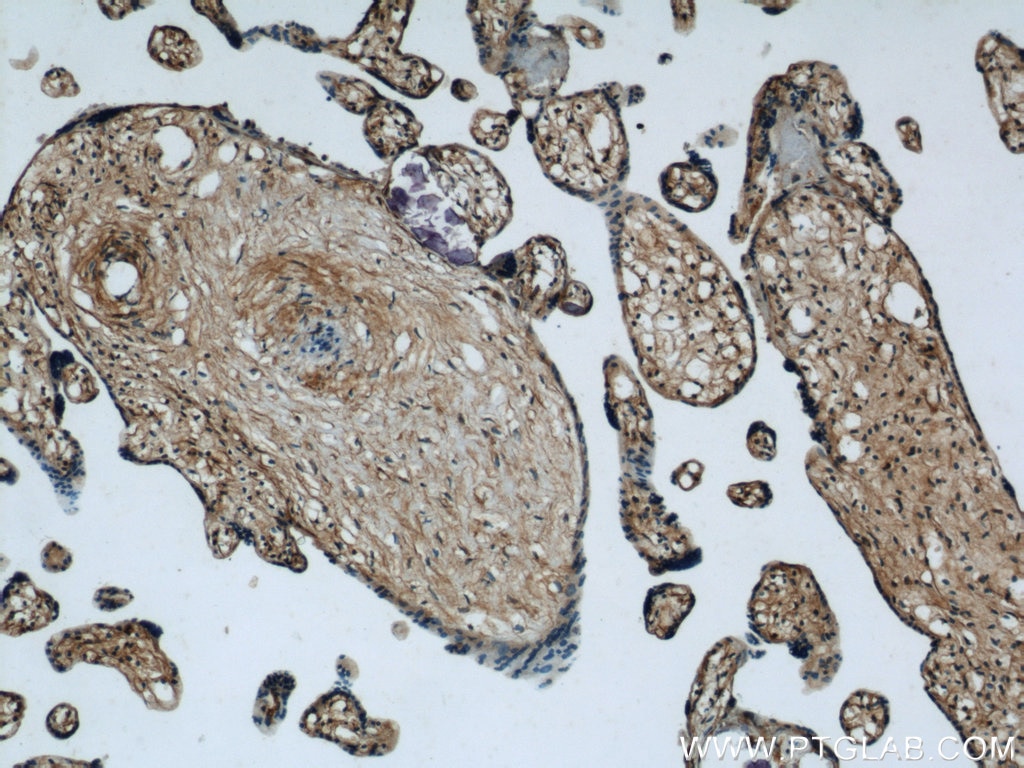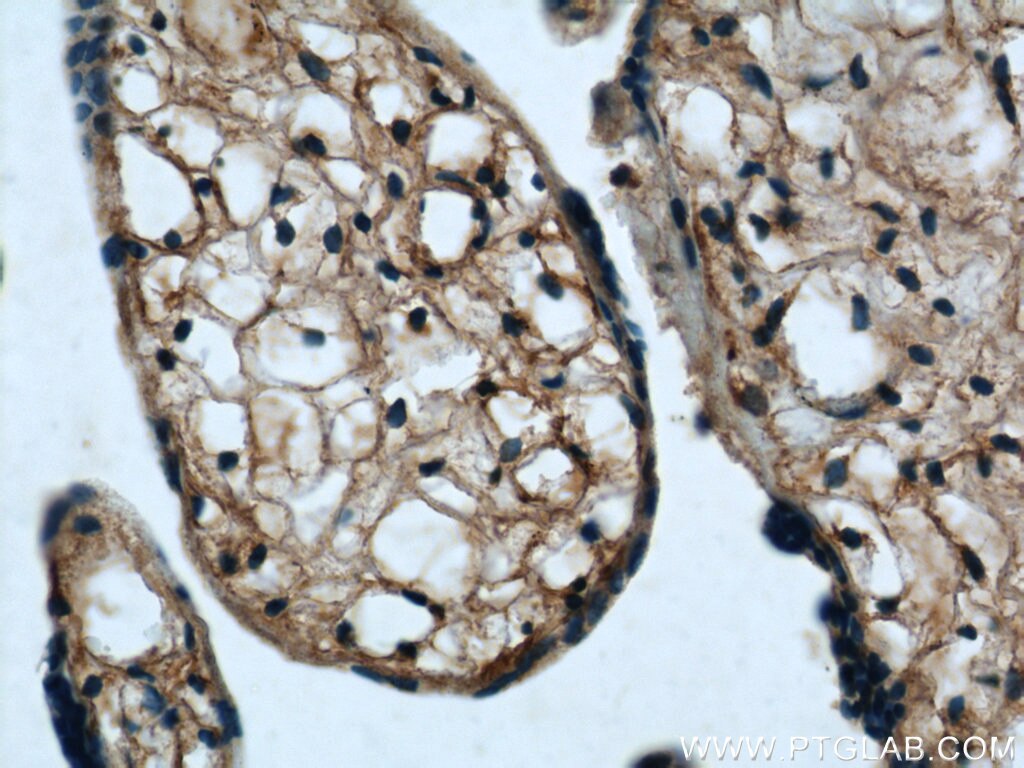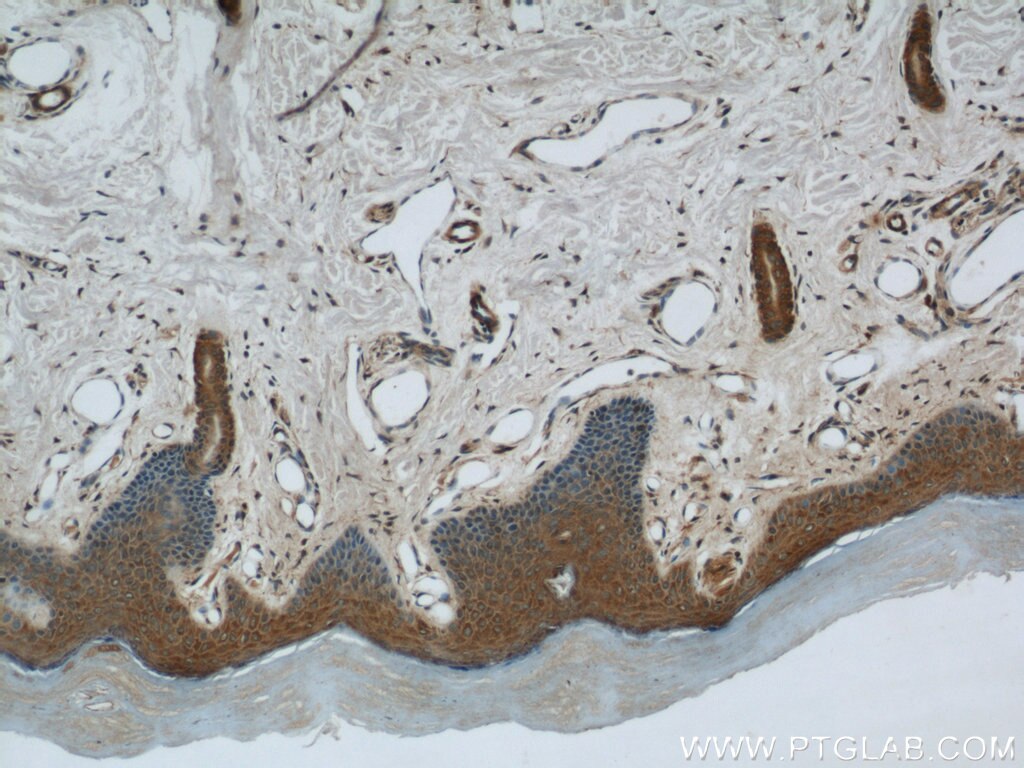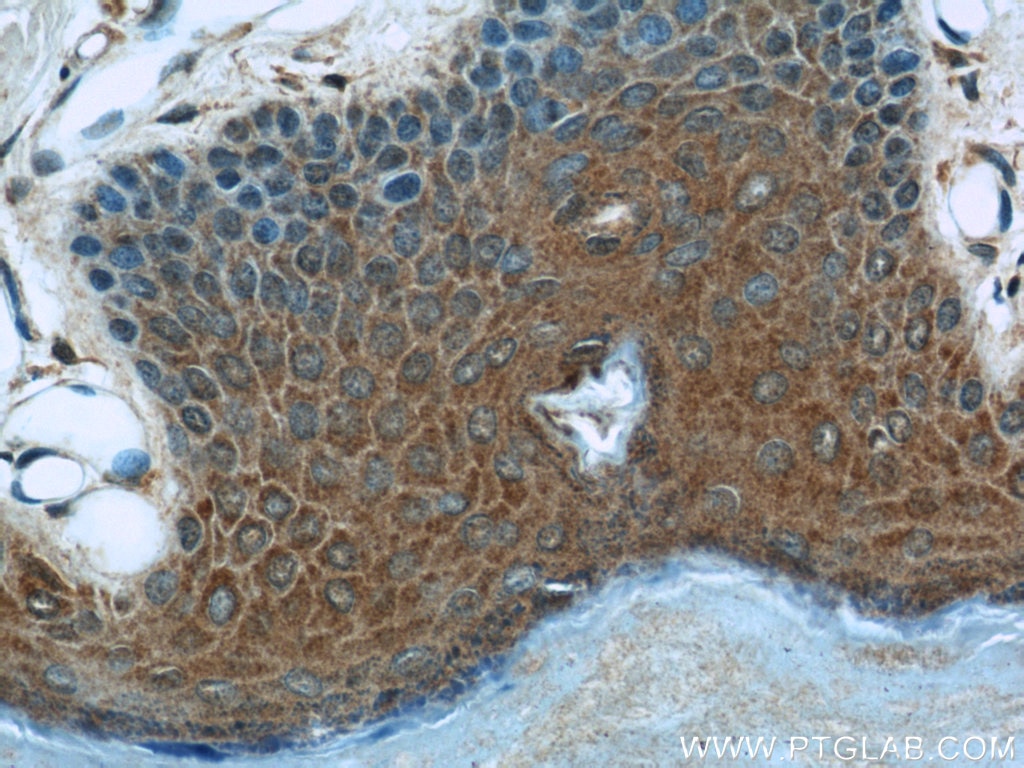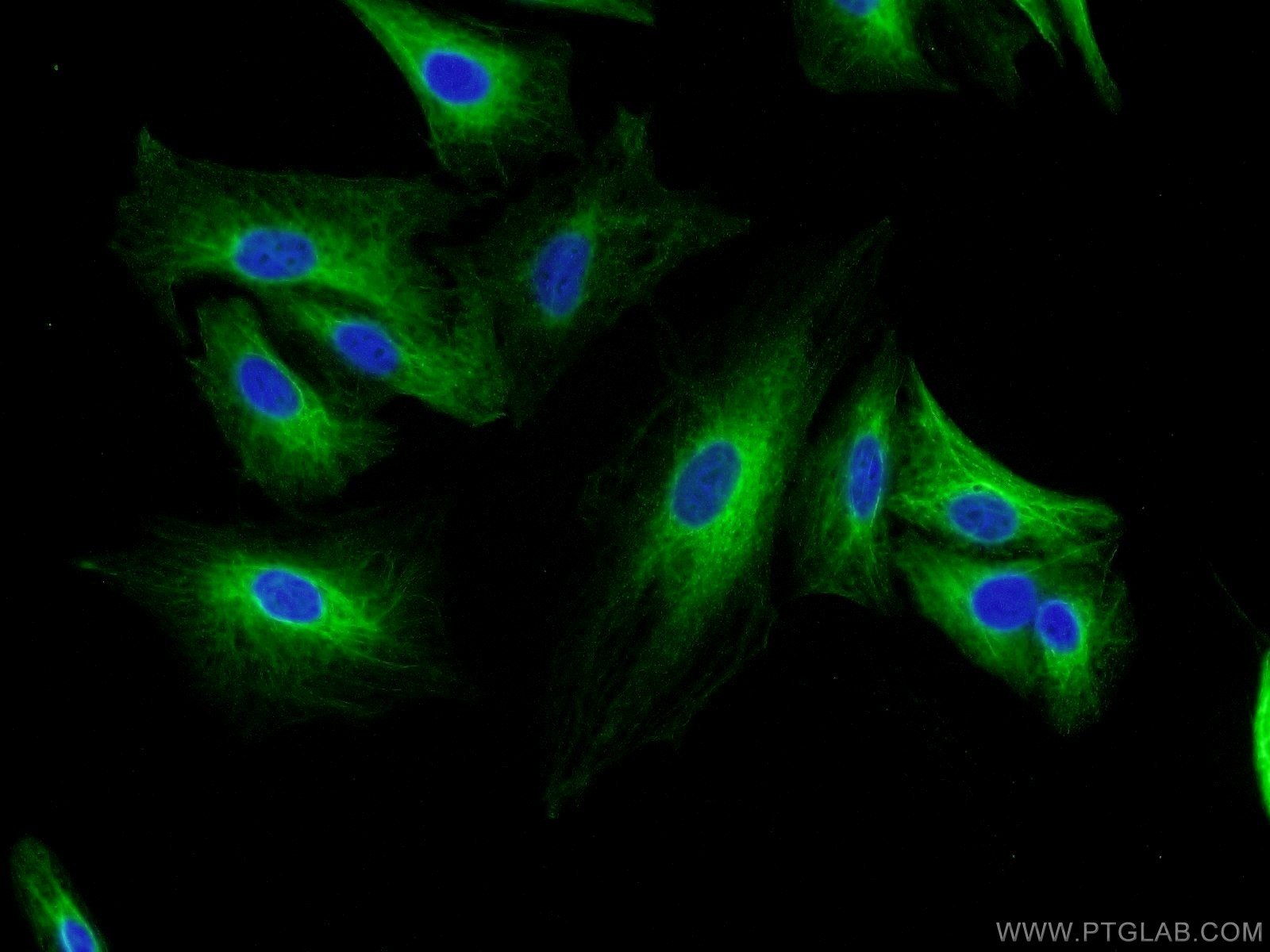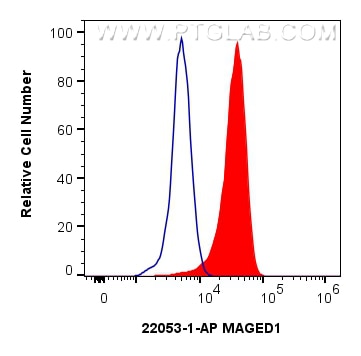- Phare
- Validé par KD/KO
Anticorps Polyclonal de lapin anti-MAGED1
MAGED1 Polyclonal Antibody for WB, IHC, IF/ICC, FC (Intra), IP, ELISA
Hôte / Isotype
Lapin / IgG
Réactivité testée
Humain, souris
Applications
WB, IHC, IF/ICC, FC (Intra), IP, ELISA
Conjugaison
Non conjugué
N° de cat : 22053-1-AP
Synonymes
Galerie de données de validation
Applications testées
| Résultats positifs en WB | cellules A549, cellules HEK-293, tissu placentaire de souris |
| Résultats positifs en IP | cellules A549 |
| Résultats positifs en IHC | tissu placentaire de souris, tissu cutané humain, tissu placentaire humain il est suggéré de démasquer l'antigène avec un tampon de TE buffer pH 9.0; (*) À défaut, 'le démasquage de l'antigène peut être 'effectué avec un tampon citrate pH 6,0. |
| Résultats positifs en IF/ICC | cellules A549 |
| Résultats positifs en FC (Intra) | cellules HeLa, |
Dilution recommandée
| Application | Dilution |
|---|---|
| Western Blot (WB) | WB : 1:2000-1:12000 |
| Immunoprécipitation (IP) | IP : 0.5-4.0 ug for 1.0-3.0 mg of total protein lysate |
| Immunohistochimie (IHC) | IHC : 1:200-1:800 |
| Immunofluorescence (IF)/ICC | IF/ICC : 1:20-1:200 |
| Flow Cytometry (FC) (INTRA) | FC (INTRA) : 0.25 ug per 10^6 cells in a 100 µl suspension |
| It is recommended that this reagent should be titrated in each testing system to obtain optimal results. | |
| Sample-dependent, check data in validation data gallery | |
Applications publiées
| KD/KO | See 2 publications below |
| WB | See 6 publications below |
| IHC | See 2 publications below |
| IF | See 1 publications below |
Informations sur le produit
22053-1-AP cible MAGED1 dans les applications de WB, IHC, IF/ICC, FC (Intra), IP, ELISA et montre une réactivité avec des échantillons Humain, souris
| Réactivité | Humain, souris |
| Réactivité citée | Humain, souris |
| Hôte / Isotype | Lapin / IgG |
| Clonalité | Polyclonal |
| Type | Anticorps |
| Immunogène | MAGED1 Protéine recombinante Ag17047 |
| Nom complet | melanoma antigen family D, 1 |
| Masse moléculaire calculée | 834 aa, 92 kDa |
| Poids moléculaire observé | 95-100 kDa |
| Numéro d’acquisition GenBank | BC014070 |
| Symbole du gène | MAGED1 |
| Identification du gène (NCBI) | 9500 |
| Conjugaison | Non conjugué |
| Forme | Liquide |
| Méthode de purification | Purification par affinité contre l'antigène |
| Tampon de stockage | PBS with 0.02% sodium azide and 50% glycerol |
| Conditions de stockage | Stocker à -20°C. Stable pendant un an après l'expédition. L'aliquotage n'est pas nécessaire pour le stockage à -20oC Les 20ul contiennent 0,1% de BSA. |
Informations générales
MAGED1 (also known as NRAGE or Dlxin-1) is a member of the type II melanoma antigen (MAGE) family of protein. MAGED1 can interact with the nerve growth factor receptor p75NTR, antagonize the association of p75NTR with TrkA, inhibit cell cycle progression, and facilitate p75NTR-mediated apoptosis (PMID: 10985348). It has been reported that MAGED1 binds Dlx5 and regulates its transcriptional function. In vivo, MAGED1 binds not only Dlx5 but also Dlx7 and Msx2 and forms homomultimers (PMID: 11084035). MAGED1 knockout mice show depressive behavior and impairments of circadian rhythm (PMID: 20300063; 23314527). Three transcript variants encoding two different isoforms (86kDa and 92 kDa) have been found for the gene of MAGED1.
Protocole
| Product Specific Protocols | |
|---|---|
| WB protocol for MAGED1 antibody 22053-1-AP | Download protocol |
| IHC protocol for MAGED1 antibody 22053-1-AP | Download protocol |
| IF protocol for MAGED1 antibody 22053-1-AP | Download protocol |
| IP protocol for MAGED1 antibody 22053-1-AP | Download protocol |
| Standard Protocols | |
|---|---|
| Click here to view our Standard Protocols |
Publications
| Species | Application | Title |
|---|---|---|
Clin Transl Med Saikosaponin-d impedes hippocampal neurogenesis and causes cognitive deficits by inhibiting the survival of neural stem/progenitor cells via neurotrophin receptor signaling in mice. | ||
Biochim Biophys Acta Mol Cell Biol Lipids Diacylglycerol kinase δ destabilizes serotonin transporter protein through the ubiquitin-proteasome system. | ||
Tumour Biol Identification of novel NRAGE involved in the radioresistance of esophageal cancer cells.
| ||
Gene NRAGE confers poor prognosis and promotes proliferation, invasion, and chemoresistance in gastric cancer.
| ||
bioRxiv Histone chaperone HIRA, Promyelocytic Leukemia (PML) protein and p62/SQSTM1 coordinate to regulate inflammation during cell senescence | ||
Int Immunopharmacol Machine learning-based characterization of PANoptosis-related biomarkers and immune infiltration in ulcerative colitis: A comprehensive bioinformatics analysis and experimental validation |
